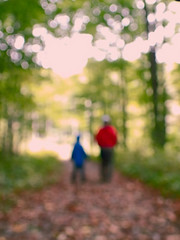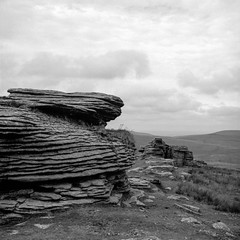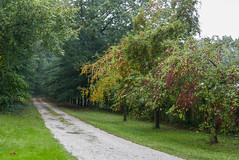Delicate
borealnz
Trees have a place in our consciousness; perhaps some more than most. A German forest ranger named Peter Wohlleben has spent much of his life studying the way trees interact. He’s learned much about the resilience of a wooded community; in your reading, you might have seen references to The Hidden Life of Trees: What They Feel, How They Communicate — Discoveries from a Secret World, published last year.
A tree operates on a much longer timeframe than we do, if it’s lucky. Our human scale is a little more immediate, and we must take care not to anthropomorphize, but the trees show patterns that we can relate to. When trees aren’t kept too far apart, they find ways to take care of each other. A tree can mind its young, tend a sick neighbor, or send sugar solution along through its roots to keep a felled companion’s stump alive for a while.
And so, as you admire Jill’s rich study of a fallen leaf, try not to dwell on the thought of a spent skeleton, or the soft tissues worn away by the elements. Think instead of a network, and of what must have flowed through these tiny veins. Think of how incredible it is that a massive tree crafts these delicate lines, and depends on them to feed. Imagine a whole forest of trees waking up together in springtime, as they’re doing right now in this part of the world, and sending their endless leaves forth to catch the sun.
Blog photograph copyrighted to the photographer and used with permission by utata.org. All photographs used on utata.org are stored on flickr.com and are obtained via the flickr API. Text is copyrighted to the author, Jenn Wilson and is used with permission by utata.org. Please see Show and Share Your Work








